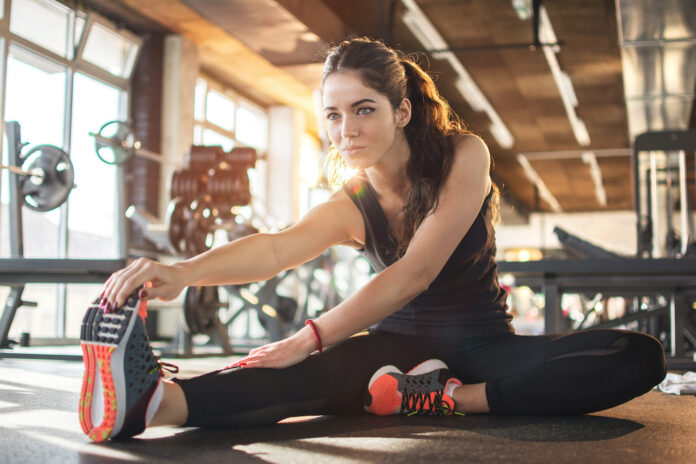DUBAI: Dubai-based former professional rugby player and current fitness coach Nino Barbu, who comes armed with a master’s degree in sports performance, walks us through the process of easing muscle stiffness that comes after an intense workout. If you plan to hit the gym to kick of 2022, make sure to follow these expert tips.
For the past few decades fitness and health experts have been trying to find a way to explain or cure muscle soreness usually felt after an intense workout.
The bad news is that a complete cure has not been found, but the good news is exercise physiologists discovered some methods that can ease the symptoms of muscle soreness.
Researchers found that when muscle temperature is increased, blood flow increases, bringing fresh oxygen and healing nutrients to the sore area. (Shutterstock)
What is muscle soreness or delayed onset muscle soreness, also knowns as DOMS?
Specialists describe it as the gradually increasing discomfort that occurs between 24 and 48 hours after activity, and it is perfectly normal and is simply an indication that muscles are adapting to your fitness regimen. The mild muscle strain during the effort creates microscopic damage to the muscle fibers. Scientists believe this damage, coupled with the inflammation that accompanies these tears, is the cause of the symptoms.
Here are some tips to reduce these symptoms…
Stretching
Stretching is one of the most underrated remedies and best performed straight after a workout during the cool down period. If you are not sure how to stretch the muscles you worked out, find some inspiration on the internet where there are a multitude of resources to guide you.
Apply heat
Brigham Young University in Utah has researched the use of heat remedies to treat muscle soreness. Researchers found that when muscle temperature is increased, blood flow increases, bringing fresh oxygen and healing nutrients to the sore area.
Ice baths
Ice baths or cold showers can also ease symptoms due to the fact that they lower the damaged tissue’s temperature and constrict the blood vessels. This helps reduce swelling and inflammation, and even numbs the nerve endings, usually bringing immediate relief. Ice baths can also help your central nervous system by aiding in sleep, and consequently, making you feel better by reducing fatigue. They can be performed after each workout for intervals of 3-6 minutes. In order to maximize the benefits of cold therapy combine it with hot therapy (a hot shower or sauna). The recommended routine for an athlete would be three rounds alternating three minutes of a hot shower or sauna with three minutes of a cold shower or ice bath.
Anti-inflammatory treatment
A naturally occurring anti-inflammatory compound is curcumin. Research suggests that curcumin can help in the management of oxidative and inflammatory conditions, metabolic syndrome, arthritis, anxiety and hyperlipidemia. It may also help in the management of exercise-induced inflammation and muscle soreness, thus enhancing recovery and subsequent performance in active people. Speak to your doctor about other anti-inflammatory treatments if you wish to take the allopathic route.
Rest
In more severe DOMS cases, the best solution might be to give your muscles a chance to heal by themselves and repair. Ideally, it is recommended to skip any kind of high-intensity cardio or power lifting sessions when sore which may only worsen and delay recovery.

